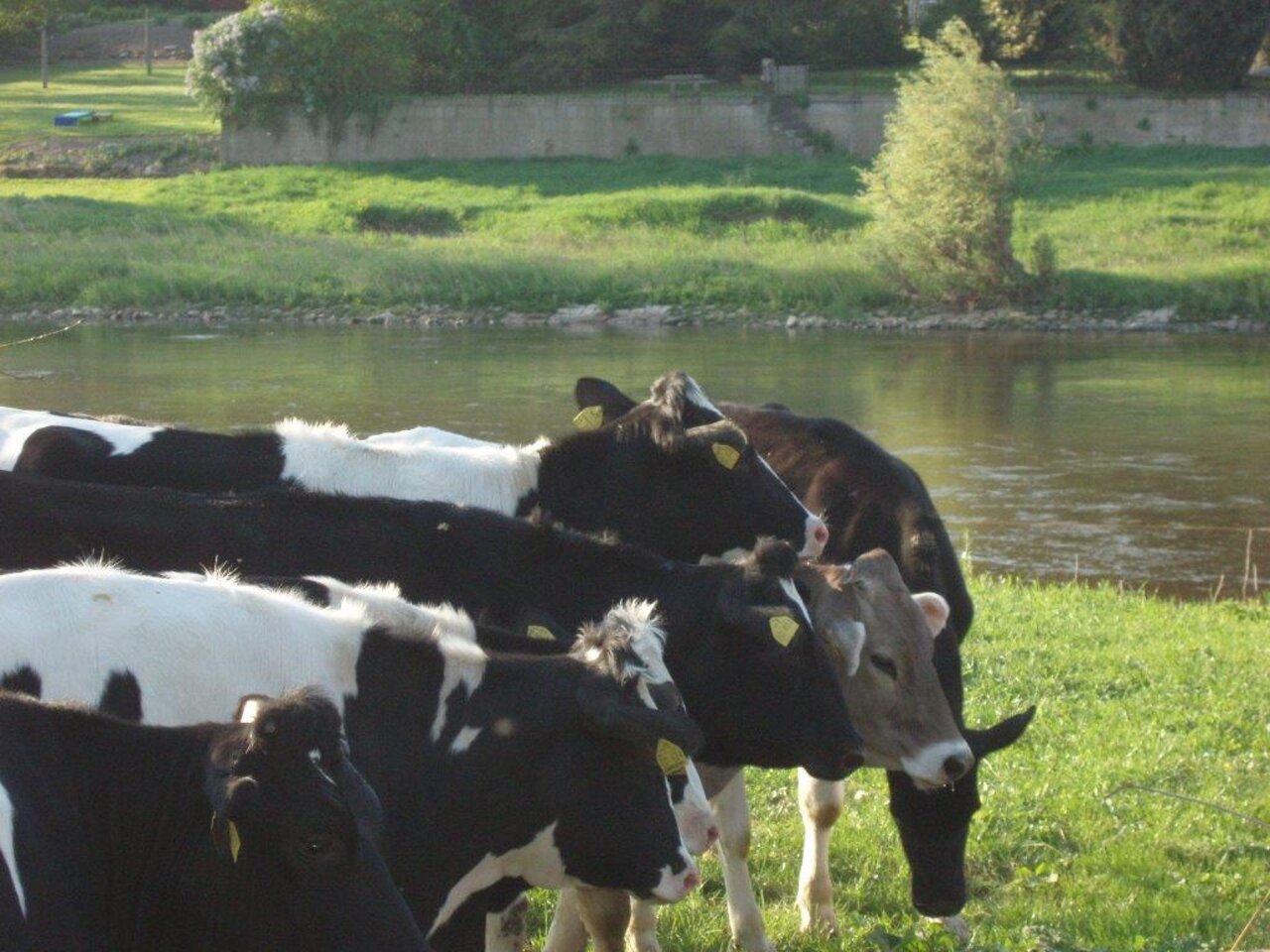Project
Spatially differentiated analyses of the agricultural water conservation in the Weser river basin

Analysis of agricultural and environmental measures in the context of agricultural water conservation and of the EU Water Framework Directive in the Weser river basin
Many water bodies in the Weser River Basin do not yet meet the requirements of the Water Framework Directive. In the project AGRUM + we analyze nutrient inputs into water bodies and what is necessary to reduce these from the view of agriculture.
Background and Objective
Diffuse nutrient inputs from agriculture stress water quality conditions. Mineral fertilizers, intensive livestock production and accompanied manure lead to a large amount of nitrogen surpluses from agriculture. These can reach groundwater and surface water via soil. The European Water Framework Directive aims to achieve good qualitative and quantitative status of al water bodies until 2015, in some exceptional cases until 2021 or 2027. In the AGRUM + Weser project we analyze the questions, where, if and how the nutrient targets of the Water Framework Directive can be achieved for the Weser River Basin.
Approach
Results
With the coupling of the models RAUMIS, GROWA, DENUZ / WEKU and MONERIS, we managed to create a model system that is suitable to illustrate the nutrient status of an entire river basin, both realistic and differentiated - in terms of large areas as well as by pathways and necessary actions and to analyze options for appropriate action. We have also made sure that the models can be transferred with relative ease to other river basins (with available data bases). In addition, the composite model is suitable to analytically accompany the action programs of the catchment areas.
Over the last 15 years we have seen that nutrient balance surpluses are reduced. According to the model calculations, this will continue until 2023. Caused by the residence times of nutrients in the soil and groundwater system, the time needed for improved conditions can differ between the regions. However, in a projection until 2015 under status quo conditions (baseline), if one takes into account delayed effects, neither the goals for groundwater nor for surface water could be achieved for the two studied nutrients, nitrogen and phosphorus.
Links and Downloads
Thünen-Contact

Involved Thünen-Partners
Involved external Thünen-Partners
-
Forschungszentrum Jülich
(Jülich, Deutschland) -
Leibniz-Institut für Gewässerökologie und Binnenfischerei (IGB)
(Berlin, Deutschland)
Funding Body
-
Bundesland Hessen
(national, öffentlich) -
Bundesland Niedersachsen
(national, öffentlich) -
Bundesland Nordrhein-Westfalen (NRW)
(national, öffentlich) -
Bundesland Freistaat Thüringen
(national, öffentlich) -
Bundesland Sachsen-Anhalt
(national, öffentlich)
Duration
3.2013 - 9.2014
More Information
Project status:
finished
Publications to the project
- 0
Heidecke C, Hirt U, Kreins P, Kuhr P, Kunkel R, Mahnkopf J, Schott M, Tetzlaff B, Venohr M, Wagner A, Wendland F (2015) Endbericht zum Forschungsprojekt "Entwicklung eines Instrumentes für ein flussgebietsweites Nährstoffmanagement in der Flussgebietseinheit Weser" AGRUM+-Weser. Braunschweig: Johann Heinrich von Thünen-Institut, 380 p, Thünen Rep 21, DOI:10.3220/REP_21_2015
- 1
Heidecke C, Wagner A, Kreins P, Venohr M, Wendland F (2014) Options for meeting WFD targets beyond 2015 in a highly polluted river basin in Germany : poster paper prepared for presentation at the EAAE 2014 Congress "Agri-Food and Rural Innovations for Healthier Societies" ; August 26 to 29, 2014, Ljubljana, Slovenia. Ljubljana: EAAE, 6 p

![[Translate to English:] [Translate to English:]](/media/_processed_/2/0/csm_LV_Bei_Hornburg_Quelle_Johanna_Fick_neu_da89674833.jpg)
![[Translate to English:] [Translate to English:]](/media/_processed_/2/0/csm_LV_Bei_Hornburg_Quelle_Johanna_Fick_neu_3aae309567.jpg)





